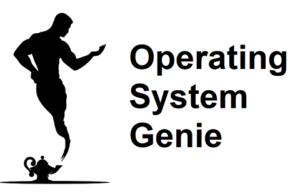Microsoft regularly releases updates to Windows that offer performance fixes, user interface improvements and security updates. Windows can continue to work fine if it has a pending update for quite some time. But, today I will cover when to do a Windows update when it’s ready to be installed, or if there’s one that is ready to be downloaded.
As a general rule, install a Windows update as soon as possible. It’s not necessary to immediately do a Windows update when one is available. However, not updating Windows over time can cause compatibility issues that can cause programs to crash, and decreased performance on some programs.
Below, I will explain in more detail the main reasons why it’s important to do a Windows update as soon as possible, the potential issues that can occur if you don’t update Windows, and explain when Windows updates come out so you will be aware of how often you will need to do a Windows Update.
Why Do a Windows Update Sooner Rather Than Later

There are a few key reasons for doing a Windows update once one is available. They are:
- Fixes any bugs that have been discovered
- It fixes any known security issues
- It updates the drivers for the components on your computer
- The user interface is improved (somewhat subjective)
Fixes bugs that have been discovered since the last update
Before a piece of software like Windows is released to the public it undergoes rigorous testing to identify any bugs. And remove them.
While a piece of software can look fine on the surface and most things can work, in many cases a certain combination of tasks can cause the code in the background to crash, and certain things to not work.
As an example, you have the calculator open, and then you open Microsoft Edge or Google Chrome. When there’s a bug with this certain sequence of actions, the code can crash and Microsoft Edge will crash.
Whereas, if you open the calculator on its own then close it, and open Microsoft Edge or Google Chrome on its own and then close it both work perfectly fine.
Though a simple example, this kind of thing can happen for more complex things. And can only be identified by testing.
While the software developers and testers try their best to iron out the major issues, smaller issues, or ones that are more rare can be discovered. And therefore, they need to be ‘patched’ after a software like Windows has been released. Windows Updates fix these. And as a result, it makes Windows less likely to crash.
Oftentimes, these can occur in the background and aren’t noticeable when you’re using your computer. But, have the effect of slowing down your computer.
So, doing a Windows Update sooner rather than later will make Windows more stable, and ensure it runs as fast as possible.
Ensures Windows is as secure as possible from viruses and hacking
As people use Windows, security issues can be discovered. Such as viruses, and malware that exploit weaknesses in Windows. Once these have been reported or found, Microsoft will fix the code so that the virus or malware can no longer work.
There are also people who look for weaknesses, and then report them to software companies, and then offer to fix them for a fee.
Software companies also offer what are called bug bounties, where they offer to pay a certain amount of money to anyone who can find a weakness in their software that can be exploited by hackers.
While not mission critical it’s better to have a more secure computer than a less secure computer. So, prioritizing installing a Windows Update as soon as possible is ideal, where possible. And having Windows Update turned on.
However, there are some issues with having Windows Updates turned on, and set to auto update. I explained what these are, in this article I wrote about whether you should turn on Windows Update.
Updates the drivers on your computer such as for the graphics card
If one of these are updated by the others aren’t it can cause compatibility issues. Sometimes, it can take quite some time for this to occur, because updates only come out a minimum of once a month.
Also, when you install updates even if something else is not updated it CAN continue to work fine with no issues at all.
A driver is a piece of software that allows a component like a graphics card to communicate information to the other components. If this software is out of date, there can be various issues. For example, a game that used to work perfectly fine no longer works.
Often drivers are updated to keep up with the latest Windows updates. AND Windows updates are created to be up to date and work well with the latest version of the drivers. So, if Windows updates, but a driver isn’t updated it can cause issues.
Almost always, the first step if you’re having an issue doing anything on your computer is to install any pending Windows updates.
Drivers for components inside your computer like RAM or a graphics card can be updated manually. This is typically one of the first troubleshooting steps to do if a game is not running correctly. Or, won’t open at all. But, this also applies to other programs on your computer.
User interface improvements (somewhat subjective)
The user interface of an operating system is somewhat a matter of personal preference. But, most people agree that a more modern looking user interface looks better.
When Windows updates come out they can modify various ways the user interface looks, which make it overall nicer to use.
But, it’s worth pointing out that some people prefer older operating systems because it has a sense of nostalgia, and they are so used to where everything is and how it looks. Such as Windows 7.
When do Windows Updates Come Out
If you keep notifications on for Windows Updates, or check it somewhat regularly you will have noticed that Windows updates come out quite regularly. Interestingly, Microsoft releases an update on the same day each month. Here’s when it is:
come out quite regularly. Interestingly, Microsoft releases an update on the same day each month. Here’s when it is:
Windows updates come out on the second Tuesday each month at 10:00am Pacific Standard time (PST). This will always be before the 15th of each month. But, there are two types of Windows Updates, quality and security updates – released once a month, and feature updates – released every 6 months.
Many people prefer not to get a notification when a Windows update comes out because pop ups can be annoying.
If you want to know how to turn off Windows update notifications you can right click on the speech bubble icon at the very bottom right of the screen and turn off notifications.
However, this will turn off all notifications. If you want to disable just the notifications for Windows it’s a bit more complicated. Refer to this article from Microsoft that explains how to do it.
from Microsoft that explains how to do it.
Do You Have To Do a Windows Update
Windows updates take some time, and require you to reboot your computer. Often it can take 30 minutes or more depending on how fast your computer is, which makes it slightly inconvenient. So, here’s whether you have to do a Windows update.
As a general rule, you do not have to do a Windows update. Windows will typically run fine for 6 months or more without doing a Windows Update. But, eventually programs will stop working as well as before, or not work at all.
The main thing not doing a Windows update does over time is create compatibility issues. Updates for programs like Google Chrome, or games also come out fairly regularly. These are typically upgraded to take into account a Windows update.
So, once they’ve all been updated multiple times, they can have issues because your version of Windows is an older version. And as you may know, one of the first troubleshooting steps to do when you are having issues with anything on a Windows computer is to do a Windows Update.
